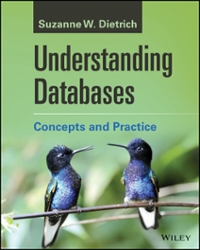Question
***********HEADER FILE *************sequence2.h // FILE: sequence2.h // CLASS PROVIDED: sequence (part of the namespace main_savitch_4) // There is no implementation file provided for this class

***********HEADER FILE
*************sequence2.h
// FILE: sequence2.h
// CLASS PROVIDED: sequence (part of the namespace main_savitch_4)
// There is no implementation file provided for this class since it is
// an exercise from Chapter 4 of "Data Structures and Other Objects Using C++"
//
// TYPEDEFS and MEMBER CONSTANTS for the sequence class:
// typedef ____ value_type
// sequence::value_type is the data type of the items in the sequence. It
// may be any of the C++ built-in types (int, char, etc.), or a class with a
// default constructor, an assignment operator, and a copy constructor.
//
// typedef ____ size_type
// sequence::size_type is the data type of any variable that keeps track of
// how many items are in a sequence.
//
// static const size_type DEFAULT_CAPACITY = _____
// sequence::DEFAULT_CAPACITY is the initial capacity of a sequence that is
// created by the default constructor.
//
// CONSTRUCTOR for the sequence class:
// sequence(size_t initial_capacity = DEFAULT_CAPACITY)
// Postcondition: The sequence has been initialized as an empty sequence.
// The insert/attach functions will work efficiently (without allocating
// new memory) until this capacity is reached.
//
// MODIFICATION MEMBER FUNCTIONS for the sequence class:
// void resize(size_type new_capacity)
// Postcondition: The sequence's current capacity is changed to the
// new_capacity (but not less that the number of items already on the
// list). The insert/attach functions will work efficiently (without
// allocating new memory) until this new capacity is reached.
//
// void start( )
// Postcondition: The first item on the sequence becomes the current item
// (but if the sequence is empty, then there is no current item).
//
// void advance( )
// Precondition: is_item returns true.
// Postcondition: If the current item was already the last item in the
// sequence, then there is no longer any current item. Otherwise, the new
// current item is the item immediately after the original current item.
//
// void insert(const value_type& entry)
// Postcondition: A new copy of entry has been inserted in the sequence
// before the current item. If there was no current item, then the new entry
// has been inserted at the front of the sequence. In either case, the newly
// inserted item is now the current item of the sequence.
//
// void attach(const value_type& entry)
// Postcondition: A new copy of entry has been inserted in the sequence after
// the current item. If there was no current item, then the new entry has
// been attached to the end of the sequence. In either case, the newly
// inserted item is now the current item of the sequence.
//
// void remove_current( )
// Precondition: is_item returns true.
// Postcondition: The current item has been removed from the sequence, and the
// item after this (if there is one) is now the new current item.
//
// CONSTANT MEMBER FUNCTIONS for the sequence class:
// size_type size( ) const
// Postcondition: The return value is the number of items in the sequence.
//
// bool is_item( ) const
// Postcondition: A true return value indicates that there is a valid
// "current" item that may be retrieved by activating the current
// member function (listed below). A false return value indicates that
// there is no valid current item.
//
// value_type current( ) const
// Precondition: is_item( ) returns true.
// Postcondition: The item returned is the current item in the sequence.
//
// VALUE SEMANTICS for the sequence class:
// Assignments and the copy constructor may be used with sequence objects.
//
// DYNAMIC MEMORY USAGE by the List
// If there is insufficient dynamic memory, then the following functions
// throw a BAD_ALLOC exception: The constructors, insert, attach.
#ifndef MAIN_SAVITCH_SEQUENCE_H
#define MAIN_SAVITCH_SEQUENCE_H
#include
namespace main_savitch_4
{
class sequence
{
public:
// TYPEDEFS and MEMBER CONSTANTS
typedef double value_type;
typedef std::size_t size_type;
static const size_type DEFAULT_CAPACITY = 30;
// CONSTRUCTORS and DESTRUCTOR
sequence(size_type initial_capacity = DEFAULT_CAPACITY);
sequence(const sequence& source);
~sequence( );
// MODIFICATION MEMBER FUNCTIONS
void resize(size_type new_capacity);
void start( );
void advance( );
void insert(const value_type& entry);
void attach(const value_type& entry);
void remove_current( );
void operator =(const sequence& source);
// CONSTANT MEMBER FUNCTIONS
size_type size( ) const;
bool is_item( ) const;
value_type current( ) const;
private:
value_type* data;
size_type used;
size_type current_index;
size_type capacity;
};
}
#endif
************* previous lab implementation file************
************sequence1.cpp
#include "sequence1.h"
#include
#include
using namespace std;
namespace main_savitch_3
{
// no argument constructor
sequence::sequence()
{
used = 0;
current_index = 0;
}
void sequence::start( )
{
current_index = 0;
}
void sequence::advance( )
{
assert(is_item());
current_index++;
}
void sequence::insert(const value_type& entry)
{
assert(size()
if(!is_item())
{
current_index = 0;
}
if(size() > 0)
{
for(int i = size(); i > current_index; i--)
{
data[i] = data[i-1];
}
}
data[current_index] = entry;
used++;
}
void sequence::attach(const value_type& entry)
{
assert(size() if (!is_item()) current_index=used; else { current_index++; for(size_type i=used;i>current_index;i--) data[i]=data[i-1]; } data[current_index]=entry; used++; } void sequence::remove_current( ) { assert(is_item()); used--; for(size_type i= current_index;i data[i]=data[i+1]; } // CONSTANT MEMBER FUNCTIONS sequence::size_type sequence::size( ) const { return used; } bool sequence::is_item( ) const { return used > current_index; } sequence::value_type sequence::current( ) const { return data[current_index]; } } Please include the new implemented file and any other changes in the header file. Thank you
Step by Step Solution
There are 3 Steps involved in it
Step: 1

Get Instant Access to Expert-Tailored Solutions
See step-by-step solutions with expert insights and AI powered tools for academic success
Step: 2

Step: 3

Ace Your Homework with AI
Get the answers you need in no time with our AI-driven, step-by-step assistance
Get Started


